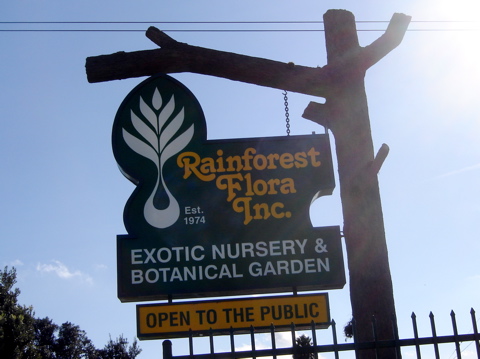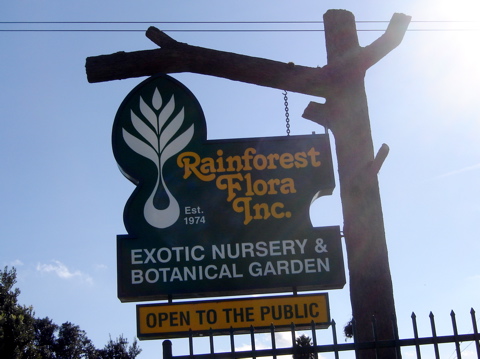
19121 Hawthorne Blvd. Torrance, CA 90503
Because residents and planners prefer not to have housing under high tension power lines, these areas can be an oasis in a metroplex of urban sprawl. An oasis is exactly what Rainforest Flora, Inc. is.
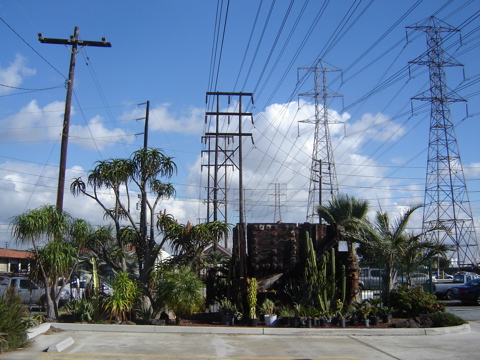
I drove by Rainforest Flora's greenhouses many times as I was passing through the busy intersection of Hawthorne Boulevard and West 190th Street, and despite a sign that clearly stated "Open to the Public," it seemed like a strange research facility where they really wouldn't welcome or have time for a looky-loo like me. Recently, a friend of mine raved about it, and I decided I had to check it out for myself.
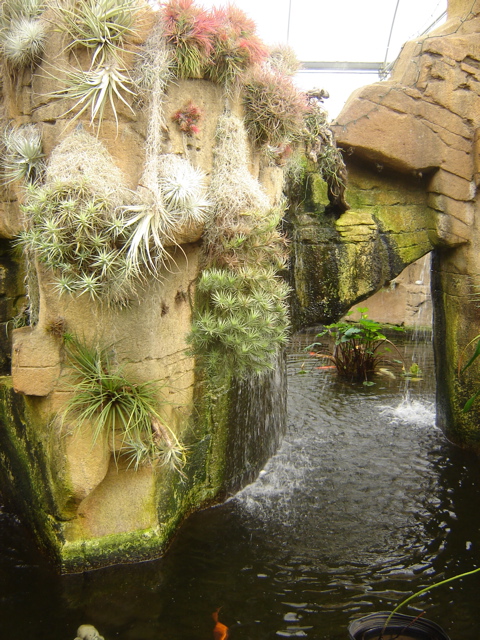
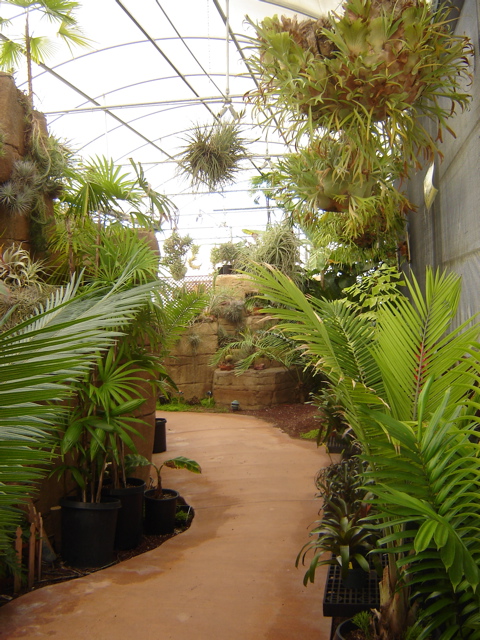
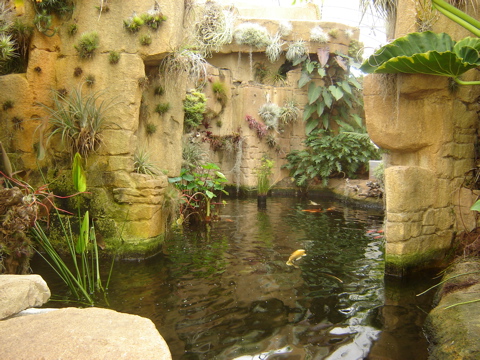
For those of you of the herb-smoking persuasion, the sight of some of these air ferns might trigger some relaxation and good vibrations in itself. Doesn't this look like a huge cannbis bush in bud, like something out the pages of High Times or the scene of a pot-raid on the 10 o'clock news?
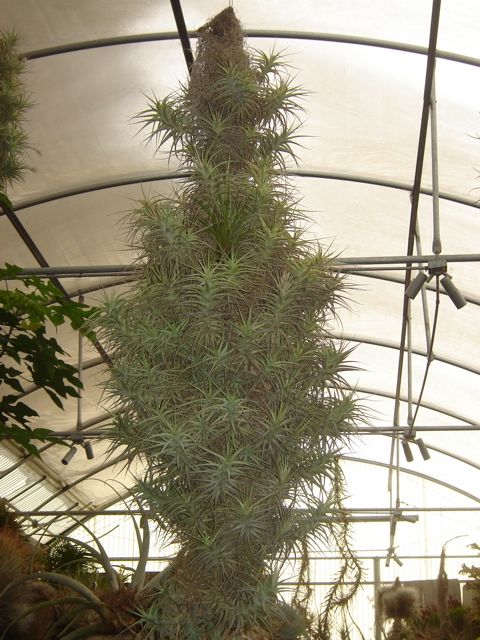
And this, up close, doesn't this look like an extraterrestrial marijuana bud from Mars, something LA Scumbag would put in his pipe and smoke for TACO's "The Nug Report"? You'll notice that this airplant has relatively large white hairs -- called trichomes -- like ones you might find on plants both licit and illicit. And like illicit horticulturalists, their legit counterparts here at Rainforest Flora are busy crossbreeding the different species, creating tillandsia hybrids that "often exhibit many of the best characteristics of both parents." Of the three large greenhouses on the property, it seems that only half of the first one is open to the public, while the remaining five halves must be devoted to growing these plants and creating new varieties.

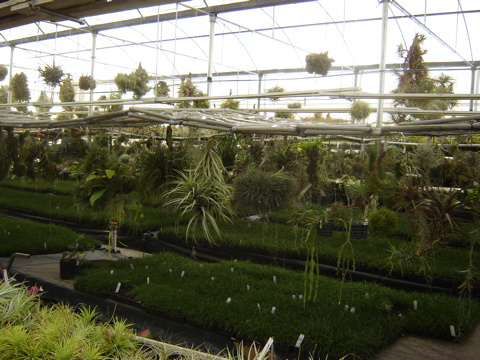
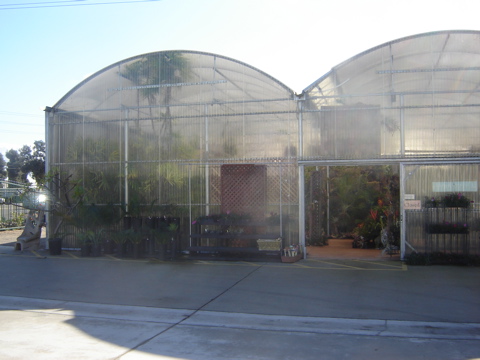
As much as it will be relaxing, a trip to Rainforest Flora can be educational: we learned that all of these plants, like more familiar orchids, are "epiphytes", which are plants that grow upon other plants for support. The roots might be only for support and no soil is needed, as moisture and nutrients are absorbed through the leaves -- often through those hairy trichomes we observed in the close-up image above. The Spanish Moss that hangs from the stately oaks in the Deep South are sold here and also related to the spikier versions seen in every corner of the greenhouse.
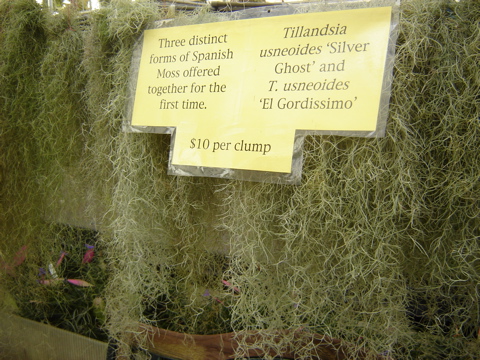
The species that really blew me away, though, were the staghorn ferns. These things are a trip and even ignoring their name, are to me strangely evocative of elephants or moose or rhinos or some other large land mammal. Or maybe like the love child offspring of one of these large land animals and a cabbage or houseplant. Yes, the leaves do resemble elk or moose antlers, and the way many of them are mounted to a wooden plaque hung the wall reminds me of a big-game trophy brought back from safari. Look at the young female hunter posing with her record sized trophy brought back from alien worlds!
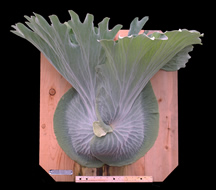

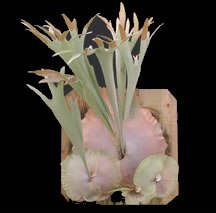




Besides mounting, the other popular way of displaying the staghorn fern varieties is in a big bowl shape suspended from the ceiling. Indeed, many of the other plant are hanging from the ceiling, contributing to the strange jungle vibe of this place.
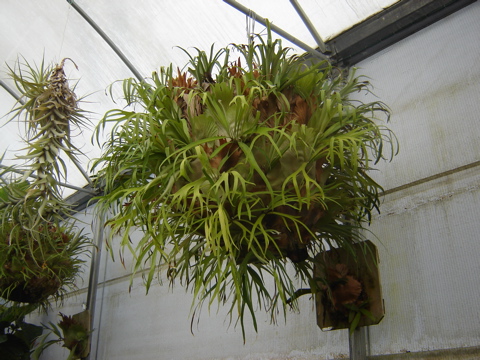
Personally, I would love to be better at growing plants, better at at least not killing them. Because of my track record with plants, I was in no way ready to pony up the dough to take home even one of the smaller staghorn specimens, which seemed to start at about 25 bucks. For me, it was difficult to leave without buying something, as I was inspired by how easily many the tillandsia species seemed to be to take care of. First of all, they can do without water for a long time, and can be either "misted" or submerged in water once a week. They tolerate very warm climates if they are watered more often, but need to be taken inside if it is going to freeze. I was also encouraged by the fact that it seemed relatively cheap to get a small collection going by choosing from their large selection of different varieties. Wish me luck with this.
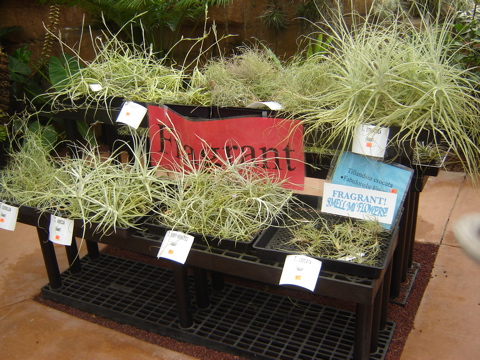
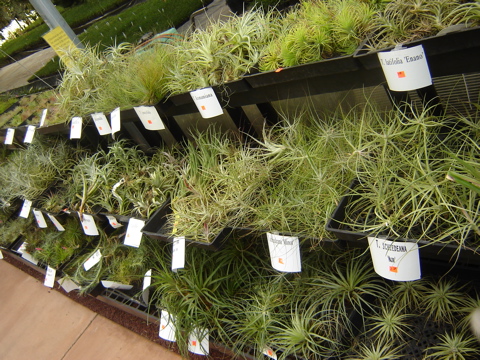


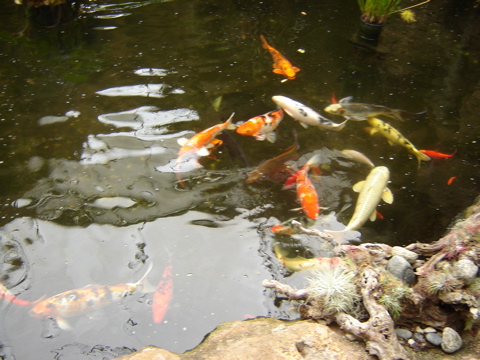
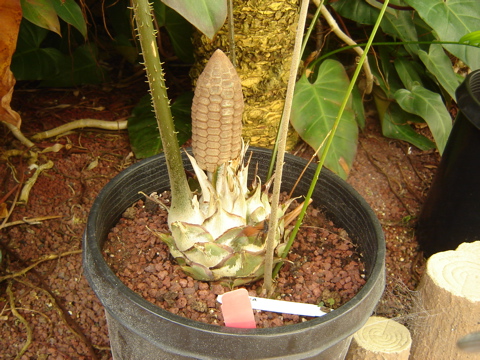
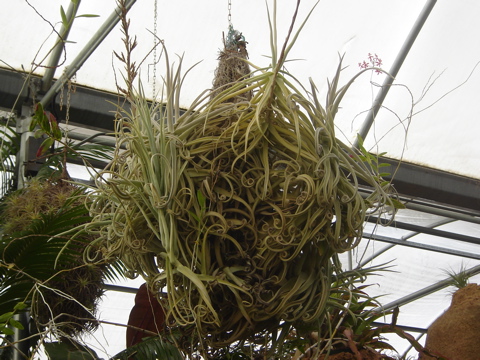
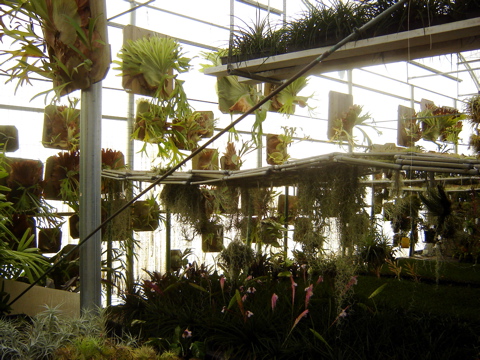
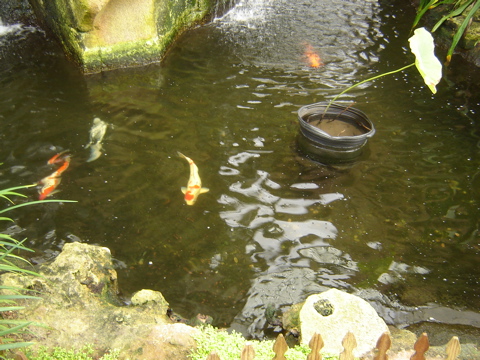
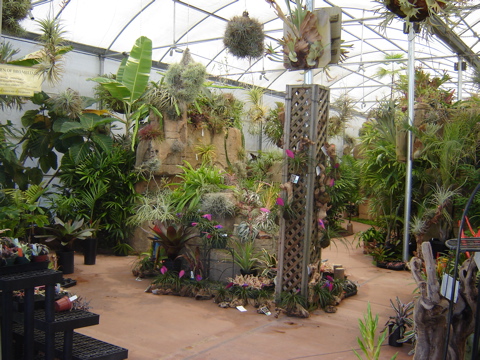
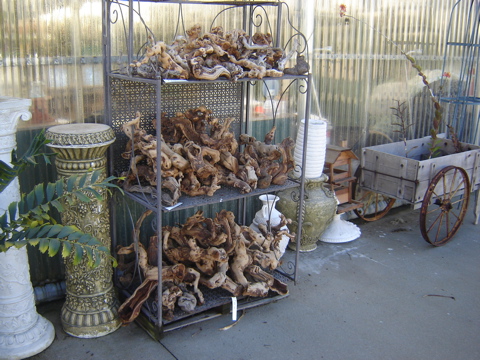
Photo Credits: Cbro, Rainforest Flora Website
